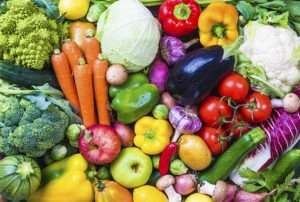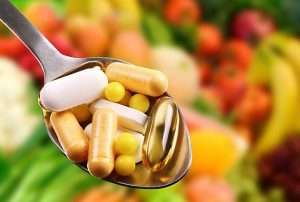How do Vitamins and Minerals work?

So if this lockdown got you to pay serious attention to what you’ve been eating, you must be wondering what is this whole fuss about ‘supplements’ that people have woken up to and how do they work?
How do you dive in and make your way through this pool of nutritional variants that claim to take care of all your lifestyle related woes concerning your health?
Let’s start by getting familiar with some basic nutritional elements that are available in plenty across different food items. Here, we try to get a better understanding of vitamins and minerals and the different roles they play in keeping our bodies healthy and functioning. Even though both the terms are used synonymously, there are subtle differences which we will try to understand here.
What’s the difference between Vitamins and Minerals?
To put it simply, vitamins are nutrients synthesised inside a living body, while minerals are something naturally found in earth’s crust.
For example, carrots produce beta carotene, which is turned to vitamin A by the body. Minerals, on the other hand, such as iron, copper and calcium are found in soil and rock.
Vitamins get very easily dispersed due to their susceptibility to heat and time; they are organic by nature. Minerals are inorganic, which makes their chemical form simpler than vitamins.
All vitamins are needed by the body but in case of minerals only some of them are required. Few examples of essential minerals would be calcium, copper, iodine, iron, magnesium, manganese, phosphorus, potassium, chromium, sulphur, sodium, and zinc.
There are 13 types of multivitamins found in nature, namely vitamins A, C, D, E, K, and the vitamin B group – thiamine, riboflavin, niacin, pantothenic acid, biotin, B6, B12, and folate.
Vitamins
Out of the 13 multivitamins vitamins B and C are water-soluble, that move around the body more easily than the other fat-soluble vitamins. Water-soluble vitamins cannot be stored in the body and so one needs to have a continuous supply of them in diet. Excess amounts are removed from the body in the form of urine.
Vitamins A, D, E, and K are the fat-soluble vitamins that, binds to fat present in the stomach and are stored in fatty liver tissues. These vitamins are relatively stubborn and difficult to excrete. Therefore, when taken in excess can stay build up in the body and lead to unwanted effects.
1. Vitamin A
Vitamin A is widely known to improve vision, support immune system and considered necessary for healthy pregnancy.
Vitamin A comes from both plant and animal sources. Plant sources include leafy green vegetables along with orange and yellow fruits and vegetables. Animal sources include liver, salmon, and whole milk.
Vitamin A is added to fortified cereals and is available as a stand-alone supplement as well.
2. Vitamin B
There are eight B vitamins which are collectively called B vitamin complex. All of them have their unique functions and in general help to produce more energy and make important molecules in the cell.
|
Table: B Vitamins |
|||
|
Nutrient |
Name |
Functions |
Sources |
|
B1 |
Thiamin |
Sugar breakdown; DNA and RNA synthesis; creating certain neurotransmitters; fatty acid production; hormone synthesis |
Cereals, whole grains, seeds, nuts, enriched refined grains, potatoes and kidney beans |
|
B2 |
Riboflavin |
Helps the body produce energy; affects enzymes that influence the muscles, nerves, and heart; proper breakdown of fats and steroid hormones. |
Oatmeal, cereals, yogurt and milk, mushrooms, green leafy vegetables and enriched bread. |
|
B3 |
Niacin |
Energy production; helps keep the skin, nervous system, and digestive system healthy; metabolic processes in body’s cells; communication and expression of DNA in cells. |
Nuts, legumes, whole grains, cereals, dried beans, and enriched refined grains |
|
B5 |
Pantothenic acid |
Influences normal growth and development; improves energy and metabolism |
Found in almost all foods including mushrooms, sunflower seeds and avocados. |
|
B6 |
Pyridoxine |
Helps break down protein; maintains red blood cells; improves brain development and immune function. |
Chickpeas, potatoes, wheat germ, bananas, and dried beans |
|
B7 |
Biotin |
Helps break down protein and carbohydrates; helps the body make hormones; regulation of DNA |
Peanuts, bananas, mushrooms, watermelon, sunflower seeds and grapefruit |
|
B9 |
Folic acid, folate |
DNA replication; metabolism of vitamins and amino acids, proper cell division |
Leafy green vegetables, citrus fruits, papaya, avocado, mushrooms, nuts, peas, dried beans, and wheat bread |
|
B12 |
Cobalamin |
Plays a role in the body’s growth and development; nerve function; DNA synthesis |
Non-veg sources plus milk, yogurt and other dairy products |
Vitamin B9 (folic acid): The natural form of vitamin B9 is called folate. While the synthetic form is known as folic acid, added to fortified foods and supplements. It helps prevent birth defects of the brain and spine, known as neural tube defects. All women who are capable of becoming pregnant are recommended to consume 400 mcg per day of folic acid from fortified foods or from dietary supplements.
Vitamin B12 is important for development and nerve function. A deficiency can lead to numbness, weakness, difficulty walking, yellowed skin, and memory loss. The elderly, vegetarians, vegans, and people who have undergone weight loss surgery are at risk of developing a vitamin B12 deficiency.
3. Vitamin C
Vitamin C is necessary for growth, repair of tissues, and various other functions in the body. Vitamin C is also helpful in building immunity and keeping cold and flu at bay. Although vitamin C supplements do not reduce the risk of getting the common cold for most people, regular vitamin C supplement intake may help to shorten cold duration and reduce symptom severity. Check Effects of Vitamin C on common cold.
4. Vitamin D
Besides building strong bones, Vitamin D plays an important role in preventing and treating a number of long-term health problems, such as osteoporosis, heart disease, some cancers, and multiple sclerosis, as per latest research.
Vitamin D is a nutrient in food as well as a hormone our bodies make through sun exposure. It is important for bone health since one of its main functions is helping the body absorb calcium. The best dietary sources of vitamin D are fortified dairy products, breakfast cereals and non-veg sources.
5. Vitamin E
Vitamin E is used to strengthen immune system, improve cell communication and to form red blood cells. Much like vitamin D helps the body use calcium; vitamin E helps the body use vitamin K. Vitamin E is largely used for skin improvement as it is helpful in eliminating scaring of the tissues.
Vitamin E is found naturally in foods and is added to some fortified foods. Vegetable oils, nuts and seeds, green vegetables, and enriched cereals are all good sources of Vitamin E.
6. Vitamin K
Vitamin K is a group name for a number of compounds that help the body make proteins necessary for blood clotting. Due to this role, vitamin K is used to reverse the anticoagulant effects of blood thinners when too much is given.
However, people taking blood thinners should consult a doctor before taking in Vitamin K supplements. New-borns, who do not have enough of it naturally, are dosed with vitamin K to prevent clotting problems.
Vitamin K can be found in leafy greens, cruciferous vegetables such as broccoli or cabbage.
Minerals
Minerals are elements found in the earth as well as few food items that are essential to life. For instance, minerals promote brain development, improve heart conditions and help in the production of hormones and enzymes.
Minerals can be divided into two categories depending on the amount required by human body. Macrominerals, required in large quantities include elements like potassium, calcium, sodium, chloride, phosphorus and magnesium.
Other trace elements, although equally important such as iron, copper, fluoride, selenium, zinc, chromium, iodine and manganese, are required in smaller amounts.
Minerals are found in variety of foods, but some of them are especially abundant. Let’s look at few examples of mineral-rich foods.
- Nuts and seeds are rich sources of magnesium, zinc, manganese, copper, selenium, and phosphorus that can be great snack options due to their high nutrient density and can easily be added in smoothies.
- Cruciferous vegetables like broccoli, Swiss chard, Brussels sprouts and cauliflower have high levels of sulphur, magnesium, potassium, manganese, and calcium. They significantly help in reducing chronic diseases, aid detoxification, improve cellular function and increase DNA production.
- Beans, apart from being protein and fiber dense are also rich in minerals like phosphorus, potassium, manganese, copper, calcium, magnesium, iron and zinc.
- Leafy greens like spinach, kale, beet greens and lettuce are loaded with minerals like potassium, calcium, iron, magnesium and copper, which are linked to reduced heart disease, cancer and diabetes. These are some of the healthiest foods that one could eat.
- Spirulina is blue – green alga that is available in powder form. It is power-packed with minerals like iron, magnesium, potassium, copper, and manganese that can reduce cholesterol and heart risk factors.
Bottom line
Vitamins and minerals are vital nutrients for propagating and maintaining health. Figuring out optimal levels of intake is essential to feeling your best.
Yet, there are many who are unable to get enough of it. For such people, opting for whole food multivitamin supplements that contain all the essential vitamins and minerals is advisable.














